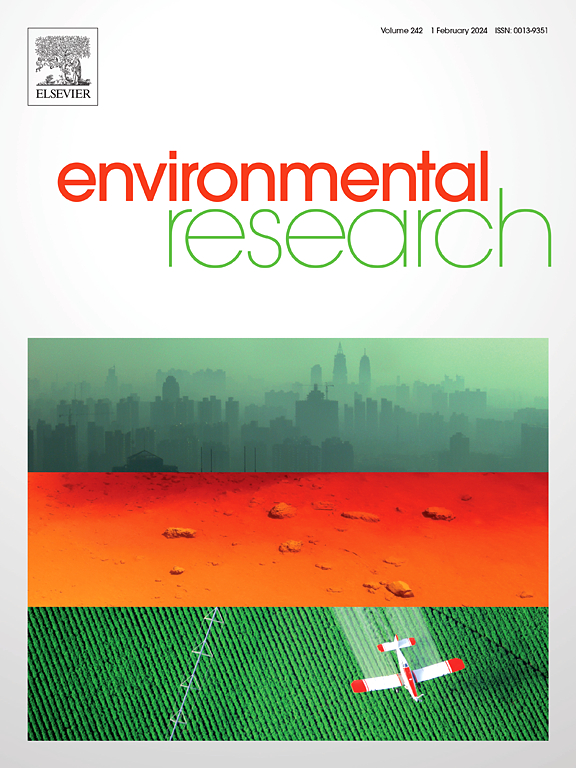Complex resistivity dispersion for monitoring soil contaminated by selected organic pollutants
IF 7.7
2区 环境科学与生态学
Q1 ENVIRONMENTAL SCIENCES
引用次数: 0
Abstract
With the rapid development of the global petrochemical industry and the widespread use of organic solvents, the problem of non-aqueous phase pollution of soil is becoming increasingly serious. Due to the significant differences in complex resistivity among various pollutants, studying the complex resistivity dispersion characteristics of different pollution types and degrees can help evaluate contaminated sites and is highly significant for pollution control. In this study, soil samples with different concentrations of trichloroethylene, xylene and gasoline were prepared, the complex resistivity dispersion curves of each group were measured, the electrical parameters were obtained by inversion. The effectiveness of the indoor experiment was verified by the field pollution delineation experiment. The results reveal the strong correlation between the degree of soil organic matter pollution, the type of pollution and the complex resistivity dispersion curve, and clarify the internal relationship between the type of pollution, the degree of pollution and the electrical parameters. Among them, the real part resistivity can effectively reflect the resistivity difference of contaminated soil, and the imaginary part resistivity can distinguish the characteristics of pollution degree and pore water composition. Based on theoretical analysis, sample determination and field test, this paper proves the effectiveness of using complex resistivity dispersion characteristics as an evaluation method for non-aqueous soil pollution, and provides a basis for complex resistivity method in the field of organic pollution monitoring and evaluation.
复电阻率色散监测土壤被选定的有机污染物污染
随着全球石化工业的快速发展和有机溶剂的广泛使用,土壤的非水相污染问题日益严重。由于不同污染物的复电阻率差异显著,研究不同污染类型和程度的复电阻率弥散特征有助于评价污染场地,对污染控制具有重要意义。本研究制备了不同浓度三氯乙烯、二甲苯和汽油的土壤样品,测量了每组土壤的复电阻率色散曲线,通过反演得到了土壤的电参数。通过现场污染圈定实验验证了室内实验的有效性。结果揭示了土壤有机质污染程度、污染类型与复电阻率色散曲线之间的强相关性,阐明了污染类型、污染程度与电参数之间的内在关系。其中,实部电阻率能有效反映污染土壤的电阻率差异,虚部电阻率能区分污染程度和孔隙水组成特征。通过理论分析、样品测定和现场试验,验证了复电阻率色散特性作为非水土壤污染评价方法的有效性,为复电阻率法在有机污染监测评价领域的应用提供了依据。
本文章由计算机程序翻译,如有差异,请以英文原文为准。
求助全文
约1分钟内获得全文
求助全文
来源期刊

Environmental Research
环境科学-公共卫生、环境卫生与职业卫生
CiteScore
12.60
自引率
8.40%
发文量
2480
审稿时长
4.7 months
期刊介绍:
The Environmental Research journal presents a broad range of interdisciplinary research, focused on addressing worldwide environmental concerns and featuring innovative findings. Our publication strives to explore relevant anthropogenic issues across various environmental sectors, showcasing practical applications in real-life settings.
 求助内容:
求助内容: 应助结果提醒方式:
应助结果提醒方式:


